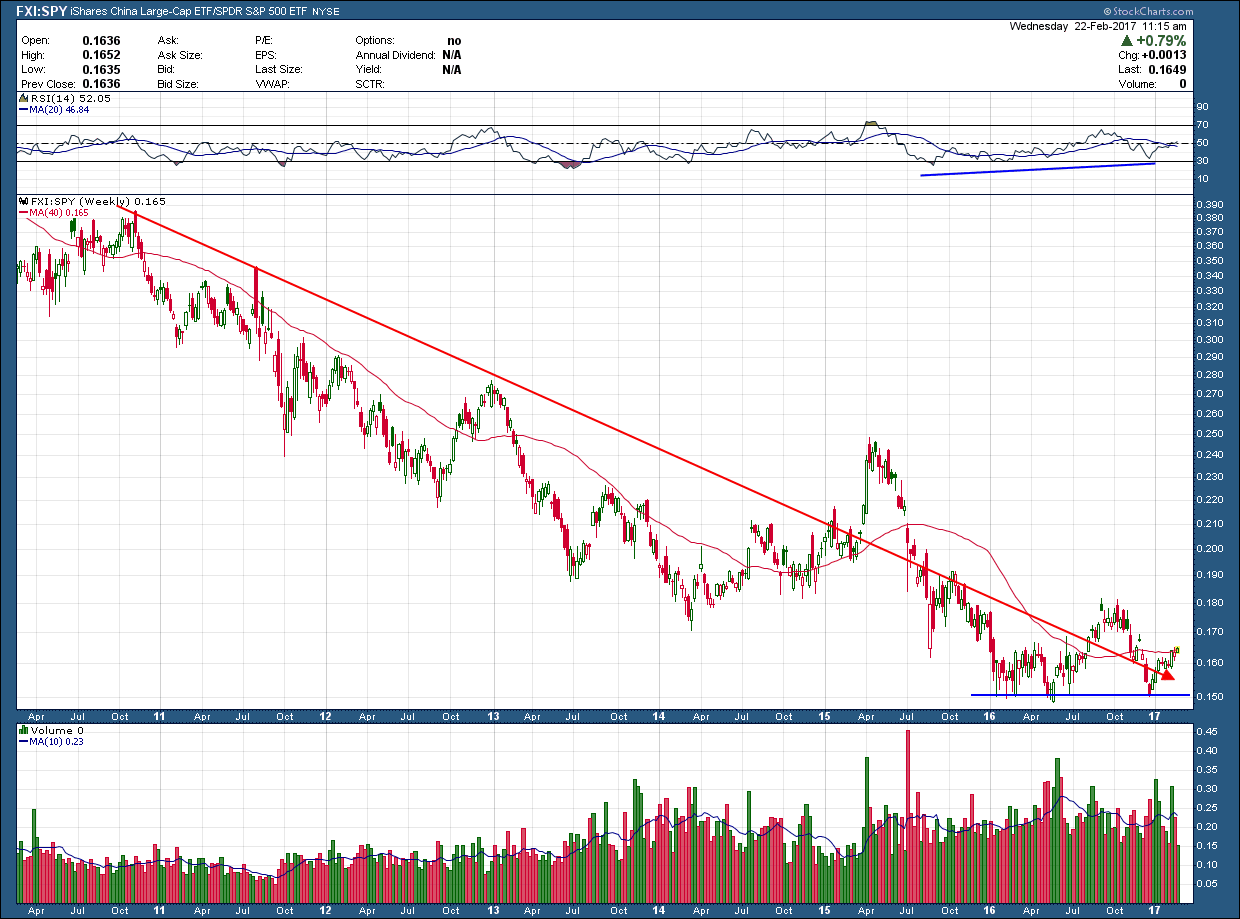Back at the end of April in 2015 I wrote about the potential topping pattern developing in the price of beef. At the time, the futures Live Cattle Subindex was ~$80 and looked very vulnerable to lower prices. I wrote that if the head and shoulders pattern played out it projected a target price of $63, which would be a healthy 21% drop. As you can see in the chart below, price not only hit the $63 initial target but continued lower down to $54 before it eventually bottomed in Sept of last year while forming positive RSI momentum divergence.
Since that time, price has moved higher and has now formed the exact same reversal (but inverse) pattern that developed at the top. In addition, the 200 day moving average is flattening and given additional time and a continuing uptrend, will curl northward. Interestingly, a break and hold above the (blue horizontal) neckline will be technical confirmation the pattern is in play and the upside target is right back where it was at my original post in 2015, $80.
If the charts are correct you should expect this summer’s BBQs to cost a bit more than last year.







